#68: Underground Railroad in SC, Stateburg, and a lecture on the Cuba-Hilton Head Connection
For South Carolina history lovers far and wide! Enjoy weekly SC history and upcoming SC historical events
Welcome to the first 100 days of the South Carolina History Newsletter! My name is Kate Fowler and I live in Greenville, SC. I have a 9-5 job in marketing, and outside of work, have a deep love of history. I started this newsletter as a passion project to learn more about our beautiful state and build a community of fellow SC history lovers along the way! To establish a foundation for the newsletter and to grow my expertise on a wide variety of South Carolina historical topics, this past February I challenged myself to post 100 newsletters in 100 days. After this coming May 20th, the newsletter will become weekly. Thank you for joining the journey!
Dear reader,
Welcome to Newsletter #68 of The South Carolina History Newsletter! I’m so happy you’re here.
Here’s a little welcome/update audio message:
As always, I’d like to also extend a special welcome to the following new subscribers — woohoo! Thank you for subscribing.
kclibka
sandrasmith310
emcleodjr
bemrgal
artmills54
I hope you enjoy today’s newsletter, and as always, please feel free to reply to this email with your ideas and suggestions on South Carolina history topics you’d like to learn more about. I’m only a click away.
Additionally, please join us & keep the conversation going by becoming a member of our SC History Newsletter Facebook Community here! I can’t wait to meet you.
And now, let’s learn some South Carolina history!
Yours truly,
Kate
(Writing from Greenville, SC)
➳ Featured SC History Event
Please enjoy our featured SC History Event below, and click here to visit my SC History Events Calendar that organizes all the upcoming SC history events I have discovered. Please let me know if you’d like to add an event to the calendar! Reply to this email or send me a note at schistorynewsletter@gmail.com.
Wednesday, April 24th from 2:30 - 3:30 pm | “The Cuba-Hilton Head Connection with USCB History Professor Dr. James Shinn Jr., PHD” | Coastal Discovery Museum | Hilton Head Island, SC | Tickets are $7
“Did you know that for over a hundred years there was a direct connection between Hilton Head Island and Cuba, via steamship? For decades, this connection brought business, trade, and cultural connections from Cuba to our island, including Honey Horn Plantation which was owned by Cuban Americans after the Civil War. Dr. James Shinn is a historian that specializes in studying Cuban American history and has spent years researching the connections between Cuba and the US throughout history. This presentation will talk about how Hilton Head Island and Cuba were connected in the late 1800 and early 1900s.”
➳ SC History Fun Facts
I.
Did you know that the National Parks Service has undergone a multi-year project to document Underground Railroad locations across the country — with 10 locations in South Carolina (and likely more to come)?
Listen to this section in the audio voiceover below!
The Underground Railroad is the phrase used to describe the efforts of enslaved people to escape the bonds of slavery in the United States in the early to mid-19th century.
The National Parks service has created the “Network to Freedom” program which — with the help of government entities, individuals, and organizations — has aggregated over 695 locations in 39 states that we know of (so far) that were used by escaped slaves in the Underground Railroad. The project’s purpose is to identify and preserve the historical significance of these spaces.
The Network to Freedom project has even put together an interactive map online where you can zoom in on Underground Railroad sites across the country. Click here to see the interactive map. For South Carolina, there are 10 Underground Railroad sites identified on the map.
I’d like to highlight 2 of the Underground Railroad sites on SC The Network to Freedom map:
Four Holes Swamp
Located near Harleyville, SC, the Four Holes Swamp was a refuge for many slaves escaping nearby plantations.
The swamp is a “massive watershed” in the Francis Beidler Forest that feeds into the Edisto River as it flows into the Atlantic Ocean, south of Charleston.
The landscape of the swamp is virtually unchanged since the time of slavery. It still contains 1,000-yr-old trees!
While researchers are working on uncovering more about the experience of the enslaved people who hid in the swamp, they know that some probably hid in the landscape for a few days, others just passed through, but some may have hidden in the swamp for many weeks — and were able to subsist off of the abundant plant and animal life within the swamp. The forest provided “food, water, natural medicines and materials to build shelter.”
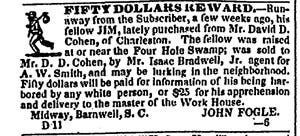
According to Matt Johnson, director of the Audubon Center at Francis Beidler Forest:
“To me, it’s really interesting because we do have that ability today to see a landscape that looks as it would have looked to people on the Underground Railroad…It’s an important piece of history in South Carolina…We want this to be something that people know about. And I think the use of swamps and other wetlands as places of refuge is not as well known.”
We do know of one enslaved man named James Matthews, who hid in Four Holes Swamp on his way to Charleston in 1838. Thankfully, he was able to gain passage on a ship to took him to freedom in Boston.
As slavery persisted, the number of escapes increased, becoming “more deliberate and organized in some places after the Fugitive Slave Act of 1850.”
Today, the swamp can be accessed via the The Audubon Center at Francis Beidler Forest, which features an elevated boardwalk with interpretive signs.
(Note from Kate: I have added Four Holes Swamp and the Audubon Center at Francis Beidler Forest to our SC History Newsletter Map of Historic Places!)
Hampton Plantation
The Hampton Plantation State Historic Site is a former rice plantation located in Charleston County.
It is a site associated with multiple escape attempts by enslaved workers between the years of 1771-1821. There were likely even more escape attempts, but only a few records survive.
Historians speculate that some of the escaped slaves may have fled by water through the extensive swamps of the Santee Delta.
(Note from Kate: The Hampton Plantation has been added to our SC History Newsletter Map of Historic Places)
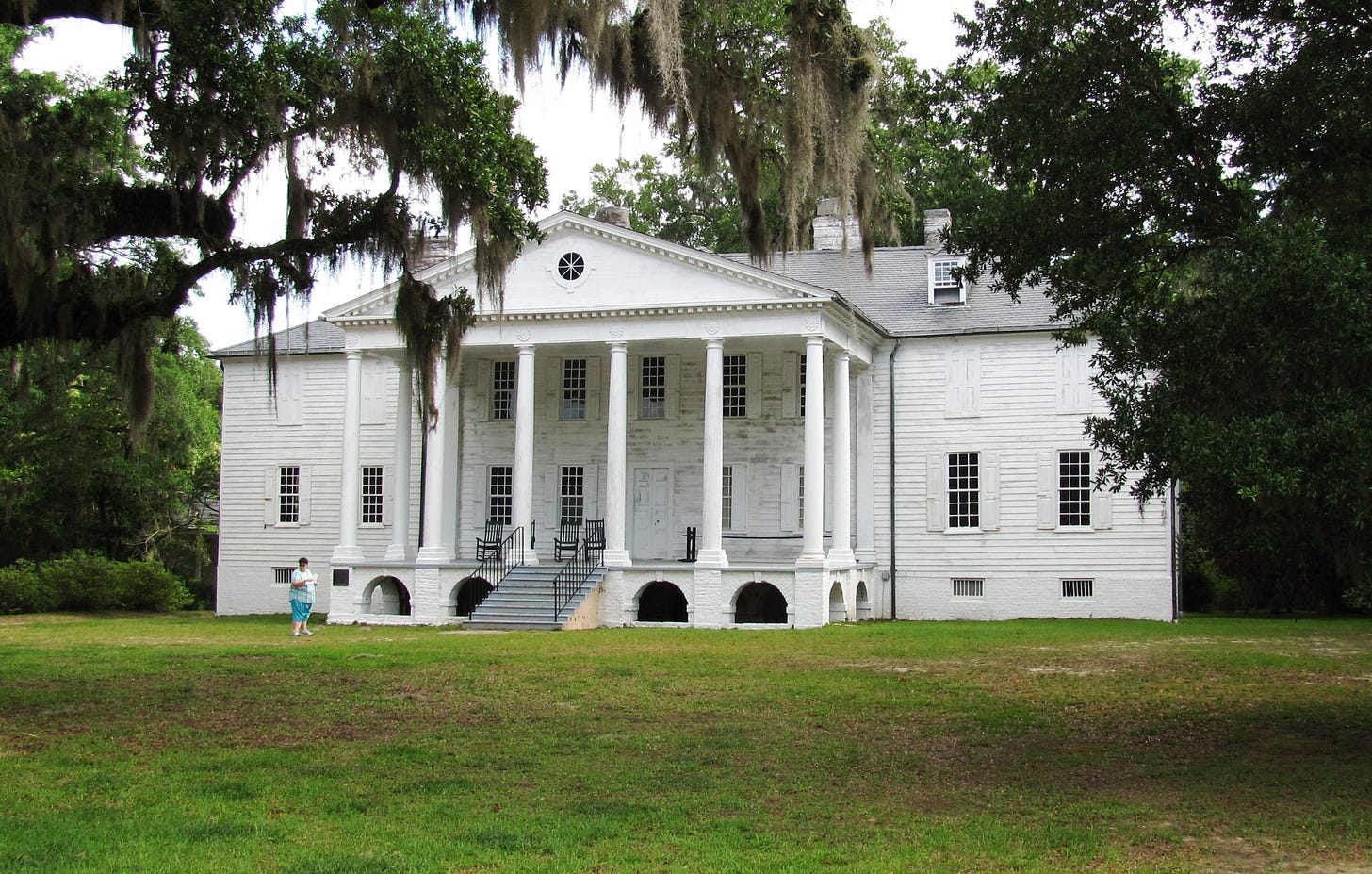
Please scroll to the bottom of this email for my sources for this section
Please leave a comment below!
II.
Did you know that in 1783, Stateburg, SC was founded by Thomas Sumter in hopes of making it the state capital?
Listen to this section in the audio voiceover below!
The name of Stateburg comes from the fact that when the town was founded by Thomas Sumter in 1783, his objective was to make it the capital of the State… Stateburg. State. Get it? (!)
By the time the SC General Assembly focused on the matter of capital relocation in 1786, Thomas Sumter didn’t have the political popularity and connections necessary to make his dream of “making Stateburg the State Capital” come true.
Although Stateburg did not become the state capital, it did become the seat of the newly established Claremont County, and at that time, was a “bustling village.”
When the Sumter District was created in 1800, Stateburg lost its status as the county seat, but while the tiny town “stagnated,” the rural areas flourished.
Since the time of the Revolutionary War, “wealthy lowcountry planters and their families had summered in the neighborhood.”
When intensive, inland cotton cultivation became lucrative in the early nineteenth century, “some planters became year-round residents and replaced their rustic retreats crowning the hills with fine, permanent homes.”
Examples of these plantations include:
The Borough House Plantation (shown below)
Brookland Plantation (shown below)
Ellison Plantation
Enfield Plantation
Home House Plantation
Homefield Plantation
James Hill Plantation
Marden Plantation
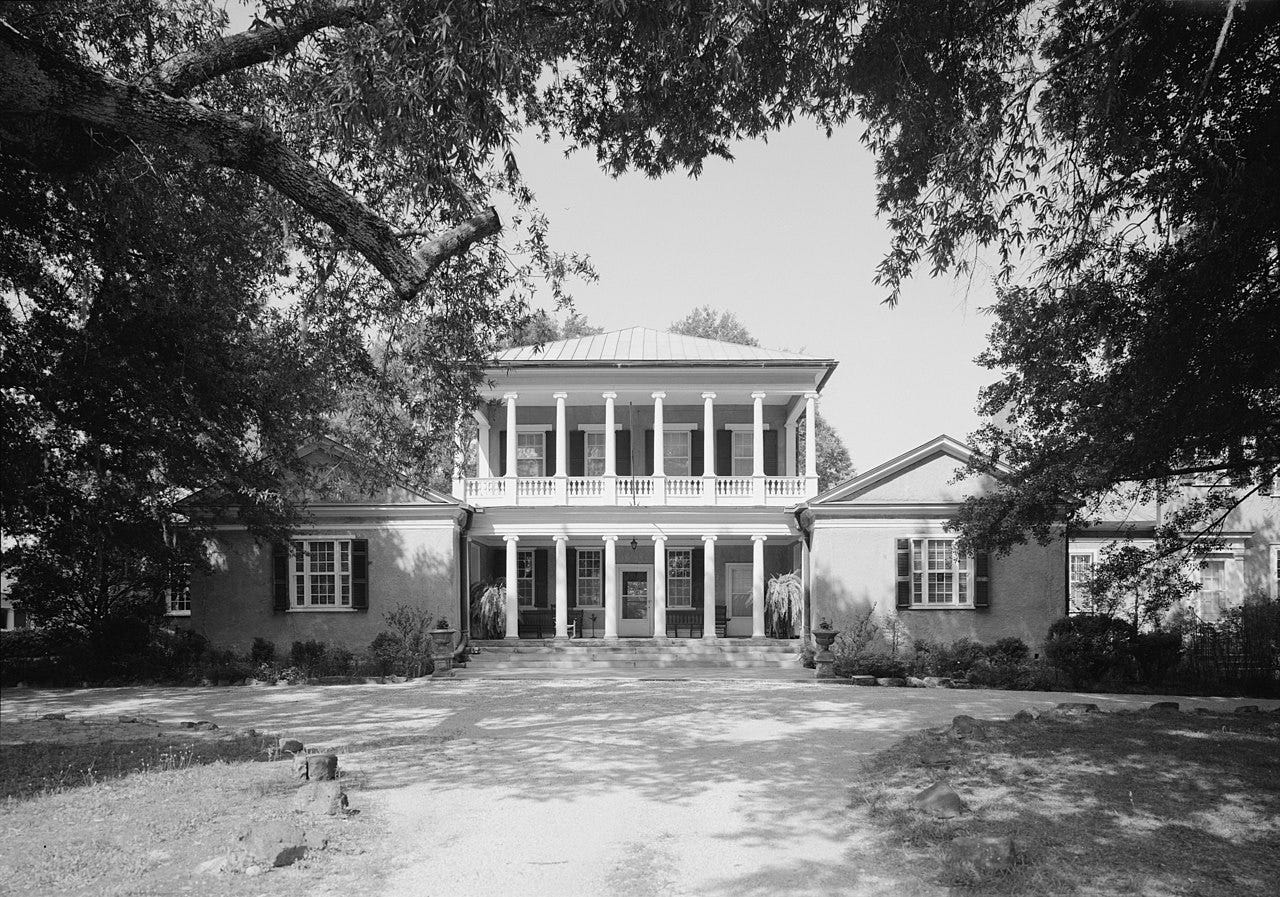
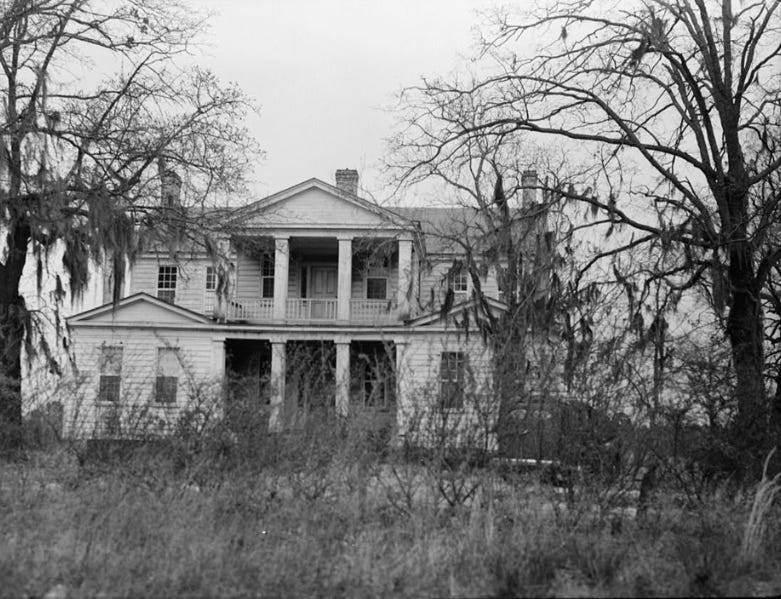
The noted architect and engineer Robert Mills wrote in the mid-1820s that “there is not a more desirable place for residence, either for health or society, in any part of the state.” The “affluence and hospitality” of those who resort and reside at Stateburg, he continued, “give to the place a character of ease and dignity.”
For more than 100 years after the Civil War, Stateburg kept much of its bucolic charm and in 1971, the Stateburg Historic District was listed in the National Register of Historic Places.
However, with Stateburg’s proximity to the Shaw Air Force Base and the growing city of Sumter, the community’s pastoral landscapes are in danger of being swallowed up by suburbanization.
Please scroll to the bottom of this email for my sources for this section
Please leave a comment below!
➳ Quote from an SC historical figure
“For many enslaved fugitives, the act of running away was a spontaneous response to an acutely traumatic event, such as an episode of corporal punishment or the threat thereof, the experience or threat of sexual assault, or the forced separation from a loved one, just to name a few of the most obvious potential triggers. Other runaways were inspired by a sudden window of opportunity, such as the death of an owner or overseer, that inspired enslaved people to escape through a temporary vacuum of power. The documentary details surrounding some runaway stories suggest the execution of a premeditated scheme, fueled by simmering frustration but only set in motion after a period of patient planning. Such cases might have been a delayed reaction to a traumatic event or a measured response to the announcement of an impending change, such as a plan to move to a new location or to separate members of a family.
Regardless of the precise motivation or trigger, the act of running away was always a bold and dangerous leap into the unknown, leaving behind familiar but painful surroundings that might have included loved ones and allies. For most fugitives, the first step towards freedom required them to choose between several potential pathways. They could escape to the country, to the city, or try to gain passage out of South Carolina on a boat, stagecoach, or train.”
—Nic Butler, historian at the Charleston County Public Library — quote taken from his podcast on the Charleston Time Machine Episode 211 “Escaping Slavery: Resistance on the Run”
Underground Railroad article sources:
“3 More Lowcountry Sites Recognized by Parks Service for Connection to Underground Railroad.” Audubon South Carolina, 22 Feb. 2022, https://sc.audubon.org/news/3-more-lowcountry-sites-recognized-parks-service-connection-underground-railroad. Accessed 18 Apr. 2024.
“Network to Freedom (U.S. National Park Service).” NPS.Gov Homepage (U.S. National Park Service), https://www.nps.gov/subjects/undergroundrailroad/ntf-listings.htm. Accessed 18 Apr. 2024.
“Swamp Used by Freedom-Seekers Recognized on Underground Railroad List.” Audubon South Carolina, 15 Dec. 2021, https://sc.audubon.org/news/swamp-used-freedom-seekers-recognized-underground-railroad-list.Accessed 18 Apr. 2024.
Stateburg, SC article sources:
Lockhart, Matthew A. “Stateburg | South Carolina Encyclopedia.” South Carolina Encyclopedia, 25 Aug. 2022, https://www.scencyclopedia.org/sce/entries/stateburg/. Accessed 18 Apr. 2024.
“South Carolina SC - Stateburg Plantations.” South Carolina SC Plantations, https://south-carolina-plantations.com/sumter/stateburg-sc-plantations.html. Accessed 18 Apr. 2024.
I always want to improve my work. Answer the poll below to give me your review of today’s newsletter. I also welcome your suggestions for new content! Simply reply to this email with your ideas. Thank you!




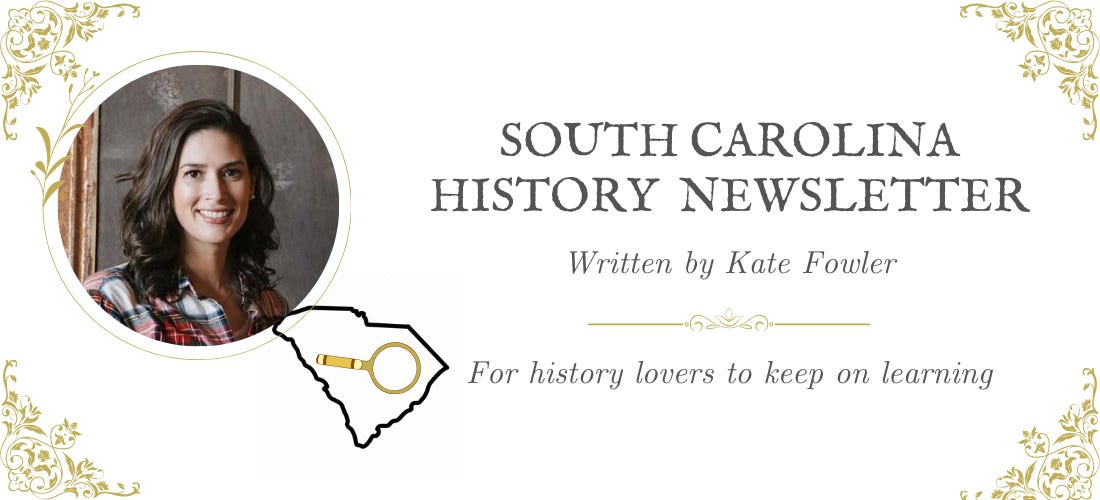


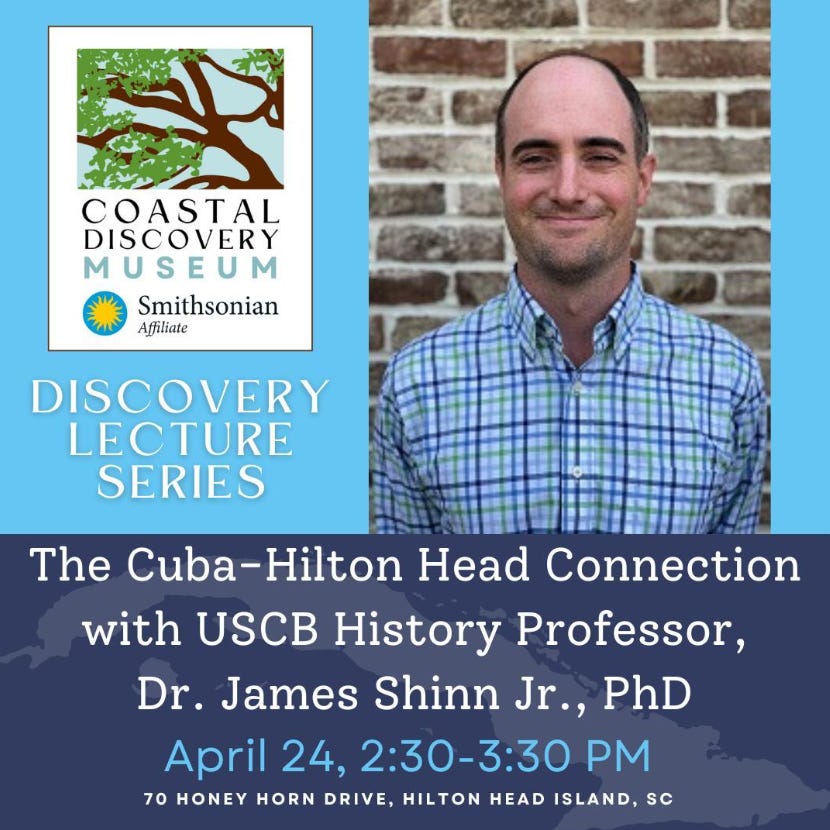


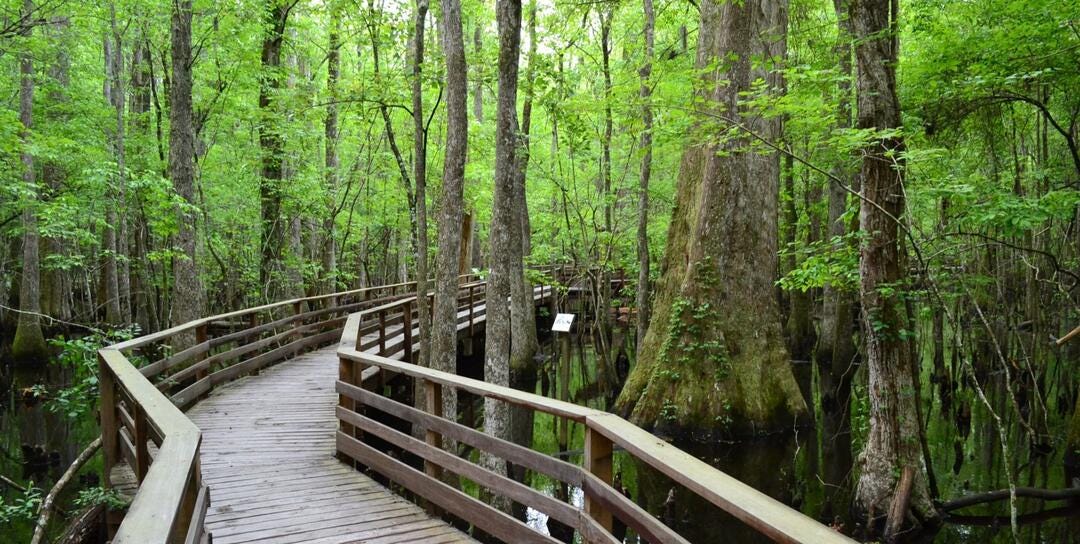




The National Park Service also has the Reconstruction Era National Historic Network and the African American Civil Rights Network - both with sites in SC.